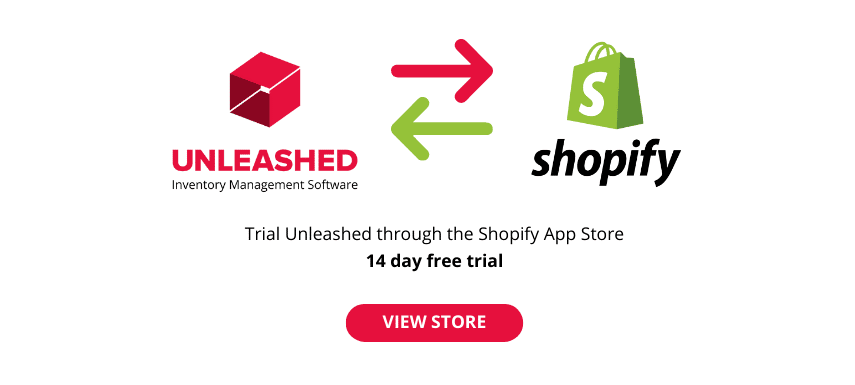
B2B eCommerce is booming and will be crucial for business success in 2023 and beyond.
In a way, it all began in 2019. Covid-19 saw businesses in many areas of the world unable to open their doors. Moving operations online became essential. Almost four years later, it looks like there’ll be no going back to pre-pandemic practices.
Here we take a look at why B2B eCommerce has become so important and how you can futureproof your business by responding to trends in this sector.
What is B2B eCommerce?
B2B eCommerce is the use of electronic channels and portals for business-to-business commercial transactions – in other words, it enables the online ordering and processing of goods between retailers, distributors, manufacturers, and wholesalers.
B2B can be contrasted with business-to-consumer (B2C) eCommerce, where businesses sell their goods or services directly to consumers.
The idea of eCommerce has been around since the 1970s, but its adoption across retail and B2B has accelerated in recent years.
The Covid 19 pandemic propelled the move to online transactions further – while many businesses were forced to close their physical doors, eCommerce opened up alternative electronic channels for B2B transactions.
 The Covid 19 pandemic accelerated the shift towards online B2B transactions
The Covid 19 pandemic accelerated the shift towards online B2B transactions
What is a B2B eCommerce platform?
A B2B eCommerce platform is software that facilitates transactions between businesses. To do so, it supports the core functions of B2B commerce, such as display, transactions, payments, deliveries and auditing trails.
As B2B eCommerce has risen in popularity, so have its online platforms – there are now numerous B2B eCommerce options available for a range of business types.
One of the world’s most successful eCommerce businesses is Shopify, which provides its customers – across both B2B and B2C channels – with an eCommerce platform supporting trade, engagement, metrics, shipping and tracking services.
Shopify was founded in Canada in 2006, and since then has become Canada’s largest publicly traded company by market capitalisation – which gives you an idea of how eCommerce has flourished in recent years.
Why is B2B eCommerce so important?
At its core, B2B eCommerce is extremely important for business success because it allows businesses to conduct transactions electronically – and through portals that enable security and privacy.
Beyond this core benefit, there are numerous other advantages of B2B eCommerce for businesses that underline its importance in today’s commercial world.
How B2B eCommerce is more efficient
One important benefit of conducting business through B2B eCommerce channels is that operations are more transparent. Businesses can order stock online, and ecommerce software is used to automate shipping, tracking and auditing of goods & services.
By integrating your B2B store with inventory software, your online selling process is automated, meaning your business will save on labour costs. This also frees up your staff for more complex tasks that add value to your business, instead of spending time on repetitive tasks that a computer programme can handle.
How B2B eCommerce ensures greater accuracy
A key part B2B eCommerce’s efficiency is that it eliminates many manual processes that can result in human error – which can be costly where large B2B orders are involved.
Using software to manage your B2B operations also improves the customer experience by providing real-time visibility over pricing, stock levels, lead times, and purchasing history.
By integrating your B2B store with inventory software, you’ll avoid the risk of stockouts and being unable to fulfil orders – or holding too much stock. Complex orders will be easier to process, including those with special pricing and discounts, and you’ll be able to track the progress of sales through the entire process.
Your B2B eCommerce store will give you more information about your customers’ purchasing habits - so you can see how well products are selling, keep your customers informed and anticipate customer demand more accurately. This data can also be used to evaluate how effective your marketing and sales practices are.
 B2B eCommerce eliminates many manual processes and human error
B2B eCommerce eliminates many manual processes and human error
How B2B eCommerce gives you more customer reach
More and more, B2B consumers are doing their product research and shopping online, especially those in younger age brackets – meaning eCommerce can be a powerful and cost-effective way to reach more customers.
To take advantage of this, you can use online marketing strategies to draw customers to your website. You’ll also need to have a user-friendly B2B store that’s easy to navigate. We’ll talk more about what a good B2B eCommerce portal should do in the final part of this article.
How B2B eCommerce can become the backbone of your multichannel strategy
Multichannel selling allows customers to purchase through different channels, including eCommerce platforms, social networks, online marketplaces and physical stores.
B2B eCommerce helps businesses’ multichannel sales become more efficient by streamlining the ordering and delivery of products. Rather than using traditional labour-intensive practices like phone calls and emails to arrange transactions, these can be handled online.
A multichannel sales strategy enables a higher volume of sales and lowers operating margins – meaning better commercial returns. Other benefits are that this strategy caters to the B2B trend of conducting more business online, and that it spreads risk across various sales channels.
Using a B2B eCommerce system for multichannel sales is especially beneficial for SMEs, since this requires little capital investment.
 B2B eCommerce can support your multichannel selling strategy
B2B eCommerce can support your multichannel selling strategy
How Covid 19 drove the uptake of B2B eCommerce
The Covid 19 pandemic created massive disruption to business in late 2019 – and also a boom in B2B eCommerce. With lockdowns around the world, shifting operations online was critical for business continuity, and this changed the landscape of B2B eCommerce.
Research by McKinsey shows how digital channels became much more important for businesses after Covid 19 hit. Not only was there a need for more digital interactions because of lockdowns, but there was a corresponding shift in customer preferences, with more customers wanting digital and self-service options.
Businesses have also adapted their customer engagement strategies to suit the new business conditions of the pandemic. And research suggests the new ways of doing B2B business are here to stay in the post-pandemic world.
Challenges like supply chain disruptions brought on by the pandemic have also made businesses more aware of the need for the streamlined, flexible and agile processes that eCommerce can offer.
B2B eCommerce: an easy way to handle repeat business
B2B eCommerce platforms can provide an extremely effective way to retain and manage repeat business. Effective platforms are able to provide data-led solutions to customers’ needs as they shop. For a repeat customer, for example, artificial intelligence algorithms can help find an appropriate product at the right time - like when they might be thinking about leaving the site.
By giving you data on customer behaviour like purchases and return visits, you can segment your existing customer base and make special offers like discounts or membership of your loyalty programme.
 B2B eCommerce provides a great way to retain customers - and manage repeat business
B2B eCommerce provides a great way to retain customers - and manage repeat business
B2B eCommerce pricing strategies
Pricing strategies can play a key role in the success of B2B eCommerce. When considering pricing, think about:
- Your customers’ needs and budgets: What will attract a wide range of customers?
- Potential supply issues: Could there be supply chain logjams, labour shortages or regulatory changes?
- Your stock levels: Do you have excess stock that needs moving, and can you use pricing to achieve this?
There are broad pricing strategies that can help guide your decision-making as you grow sales. Here we outline two of these:
Tiered pricing
Tiered pricing is where a seller segments the price of a product: The first tier is for the lowest number of goods and is most expensive per unit. Once the quantity in each tier has been sold, you move to the next, which has a lower cost per unit.
For instance, you might sell 20 chairs. On a tiered pricing model, the customer will pay different prices for the chairs:
- The first 2 chairs are $200 each
- The next 3-10 chairs are $180
- The next 11-20 chairs are $160 each
This means your pricing caters for a wider range of customers and budgets, giving your customers a better experience and increasing the likelihood of a sale.
This strategy incentivises bulk purchasing, since the average cost per unit decreases when more units are purchased. It also allows for products to be grouped in ways that reflect the quantity, quality and sales services available.
Volume pricing
Volume pricing is often confused with tiered pricing, but is different. In this model, a defined price is set for a given number of units – in other words, volume pricing gives a price for all the units sold within a particular range.
Going back to the chair example, the pricing might be set like this:
- 1-2 chairs: $200 each
- 3-10 chairs: $185 each
- 11-20 chairs: $170 each
As with the volume pricing strategy, there is an incentive to bulk buy, since the average cost per unit drops when more units are sold.
 Tiered and volume pricing can be demonstrated using sell prices for chairs - both models incentivise bulk purchasing
Tiered and volume pricing can be demonstrated using sell prices for chairs - both models incentivise bulk purchasing
B2B eCommerce inventory management: What is it, and why is it important?
Good inventory management is critical for a B2B eCommerce store. As your customer base grows, it's vital that you can deliver on customer orders as expected – failure to do so can easily translate to a loss of customers and reputational damage.
These days, companies usually use integrated inventory and B2B eCommerce software to manage their B2B stock effectively. This ensures your eCommerce store displays up-to-date and accurate stock levels to your customers – an important first step, since B2B businesses often deal with large quantities of stock that need to be delivered quickly.
An inventory system will also make sure you don’t run out of stock or order in too much – either of which can be costly. You can even use this system to set alerts when stock levels are low and reorder products.
Inventory management gets more complicated when you are using multichannel sales: You need a system that can manage your inventory across channels so you don’t oversell your product through one of them.
And remember that effective use of warehouse space is crucial too. Careful inventory management will also help you arrange your warehouse to make picking, packing and delivery more efficient – you’ll want high turnover products to be accessible, for instance.
Last but not least, your inventory management data gives you with a wealth of insights to inform future business decisions.
 Inventory management software helps you manage stock and avoid letting customers down
Inventory management software helps you manage stock and avoid letting customers down
B2B eCommerce trends: What should a good B2B eCommerce portal do?
Covid 19 has accelerated numerous trends and digital innovations that are likely here to stay.
These swift changes have forced businesses to rethink and improve on their online B2B practices – from what their digital interfaces look like, to their ability to electronically manage their business, to how their customers experience the purchase process.
We’ve identified four trends that will shape this sector in the future, and here we outline how you can respond to these changes.
The changing B2B customer demographic
Younger people who are used to digital transactions and technology are now heavily represented in B2B eCommerce.
A B2B report by DemandGen confirms this: 40% of millennials surveyed were the sole decision-makers in B2B purchases for their department.
What does this mean for B2B business? Millennials have a preference for using digital channels – including social media – to find out about products, meaning an online presence is a must.
Millennials prefer video to find out about products, and are concerned with social and environmental considerations – two more factors that B2B businesses might think about taking into account.
Changing customer expectations: from B2C to B2B
B2B customers are changing and so are their expectations of what B2B will look like. Many of the features they expect are borrowed from best-practice B2C eCommerce and provide a seamless and user-friendly experience. This means your B2B store should:
- Have an attractive appearance –including visual merchandising – and be easy to navigate
- Provide accurate and up-to-date catalogues with product details, stock availability, lead times and pricing
- Allow for quick, self-service transactions and give a range of payment options
- Be accessible on a range of devices, including mobile and tablet
- Give customers control over their orders – e.g. if they want to change quantities or cancel the order within a given timeframe
- Provide packing and flexible delivery options
- Offer support during and after transactions – e.g. by chat and phone
 Millennials are increasingly involved in B2B purchasing, and have a preference for using digital channels to find out about products and services
Millennials are increasingly involved in B2B purchasing, and have a preference for using digital channels to find out about products and services
The rise of artificial intelligence and machine learning
B2B buying is a far different beast from what it was just a few years ago. Online research is now extremely important for buying decisions: B2B buyers make around 12 online searches before making a final decision on where to put their purchase dollars.
This means that B2B sellers must utilise search engine optimisation and AI expertise to win customers. Once a purchaser has landed on a particular business, AI and machine learning will support a data-led understanding of the customer’s needs and enhance their experience – for example, by offering appropriate and timely options to potential customers.
Customisable communications
Related to AI and machine learning is how companies personalise their interactions with customers and strengthens their relationship with them.
According to one forecast, 72% of B2B customers expect companies to understand and predict their needs - even before first contact. However, the reality is most businesses are way behind in their ability to do this.
B2B businesses that want to improve in this area should take the time to research who their customers are and how their different needs can be met within the existing business model.
AI and machine learning technology can help you enhance personalisation. Tools are now available that use data like how customers behave on your website and what makes customers click to personalise your content and offers.

